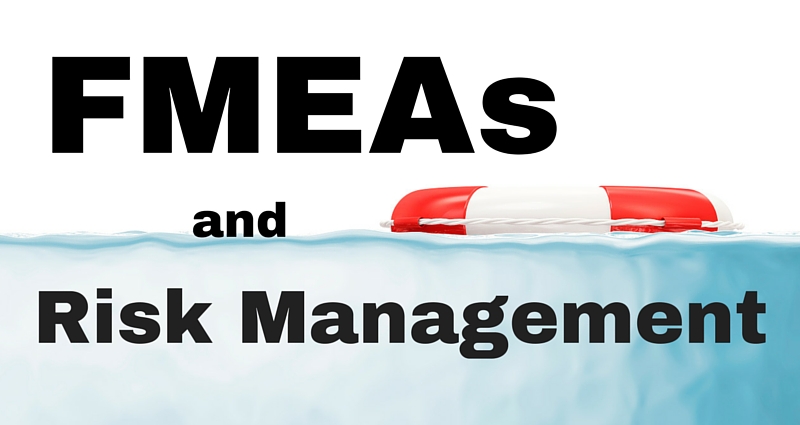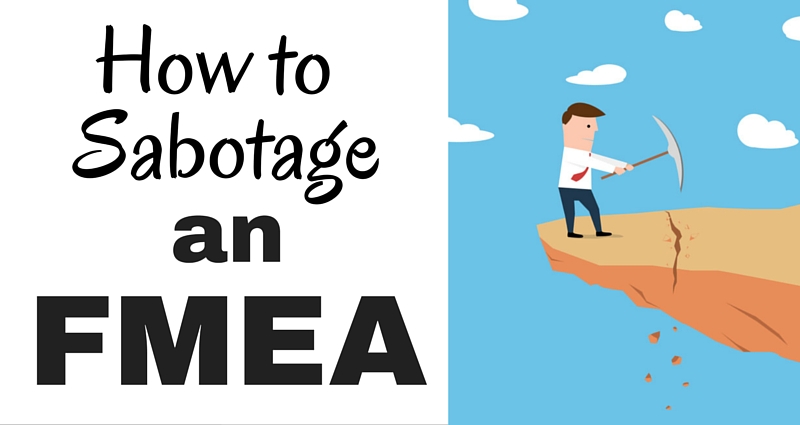Jump into an FMEA without any advance preparation and you will be setting your team up for frustration as they spin their wheels and backtrack to make-up for poor planning. This two-part FMEA Preparedness Checklist will help management define FMEA projects and select teams as well as help teams gather necessary information and documents before their first official meeting.
Preparation for conducting an FMEA
Define the Process or Design to be studied.
- Use a PFMEA (or DFMEA) Scope Worksheet to define the bounds of the study and helps prevent scope creep.
Select FMEA team members.
- A team size of 3 to 6 people who work in or are internal customers (or suppliers) of the process or product) usually works well.
- SMEs (Subject Matter Experts) don’t need to be team members; call upon them as resources for specific aspects of the study.
Confirm team members have had adequate background and training.
- Does each team member have insight into the process or design under study?
- Has each team member received prior training in FMEA practices and techniques?
Identify likely SMEs (Subject Matter Experts).
- What aspects of the process or product may the team need to call upon SMEs?
- Have SMEs been notified that their assistance may be needed?
Determine if a universal custom Ranking Scale is available.
- Organizations should use the same set of custom Ranking Scales for all FMEAs.
- Custom Ranking Scales (with organization examples) make it easier to rate items and make it possible to compare potential risk across multiple FMEAs.
Information that should be collected before conducting an FMEA
Processing Data
Assemble:
- Process Flowcharts (of the process under study)
- Travelers or Routing Directions (for the process under study)
- Work Instructions, Operanking Instructions or SOPs
- Assembly Drawings with BoMs (Bill of Materials) or Part Numbers
- Workflow Diagrams with Process Layouts (for the process under study)
Specification and Testing Data
Assemble:
- Internal (In-Process) Specifications
- Test Methods (used in the process or for the design)
- The results of GR&Rs (Gage Reproducibility & Reliability Studies for measurement equipment used in the process or for the product)
- Customer Requirements (for the process output or the design)
Supporting Data
Assemble:
- Typical Production (Build) Schedule (e.g. lot or batch size)
- Yield rates, rework and scrap data (for the process under study)
- Failure Data and Warranty Information (for the process output or design)
- Maintenance Records & Manuals (for relevant process equipment)
Helpful Resources
- Download the FMEA Preparedness Checklist (MS Word | PDF)
- Download the FMEA Preparedness Checklist for the 2018 AIAG-VDA FMEA (MS Word | PDF)
- Seven Things You Need to Know About FMEAs
 ---FMEA-Training.com Articles by Resource Engineering, Inc. are licensed under a Creative Commons Attribution-NonCommercial-NoDerivatives 4.0 International License. Permissions beyond the scope of this license may be available by contacting us.
---FMEA-Training.com Articles by Resource Engineering, Inc. are licensed under a Creative Commons Attribution-NonCommercial-NoDerivatives 4.0 International License. Permissions beyond the scope of this license may be available by contacting us.







